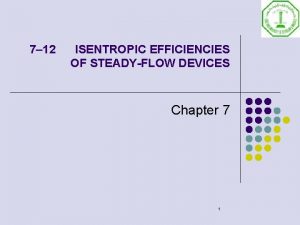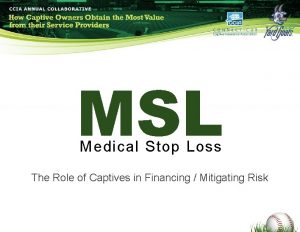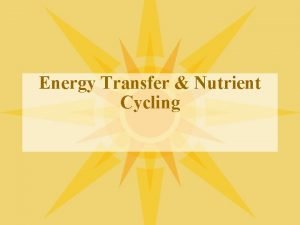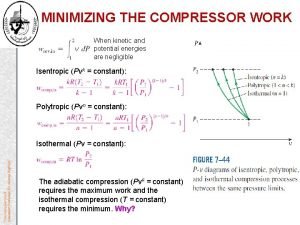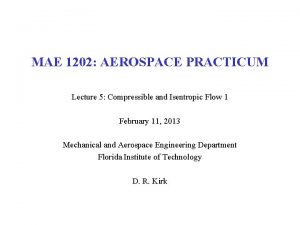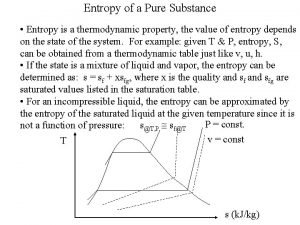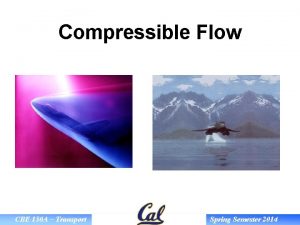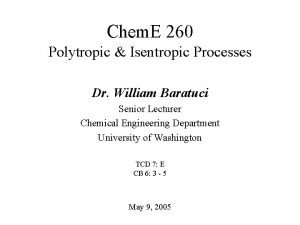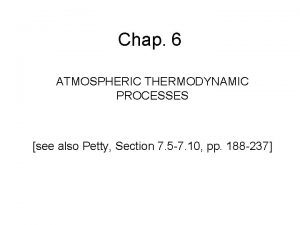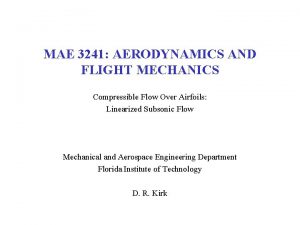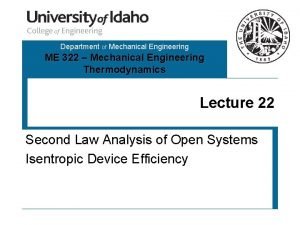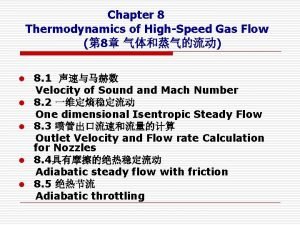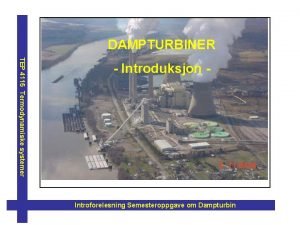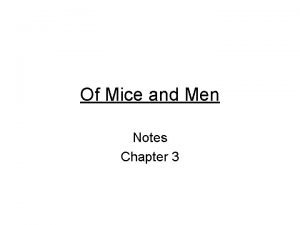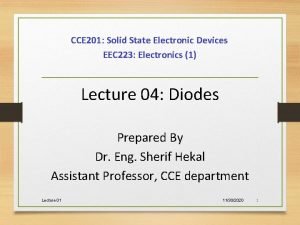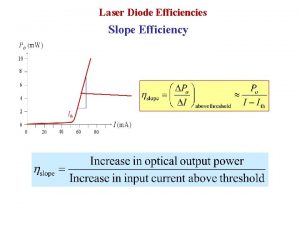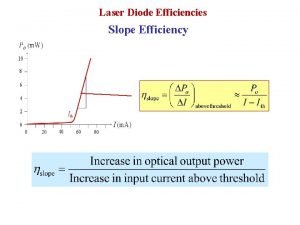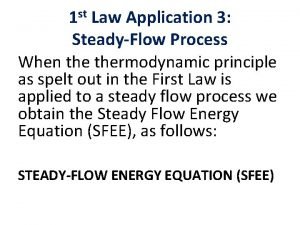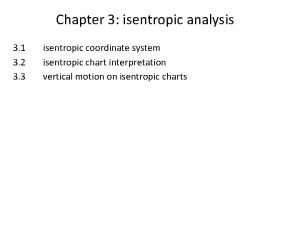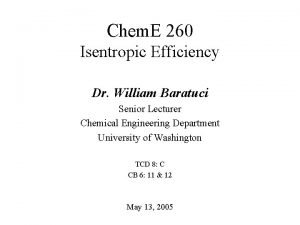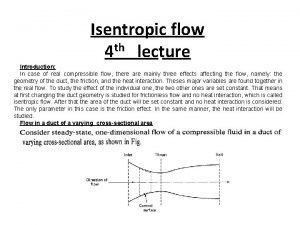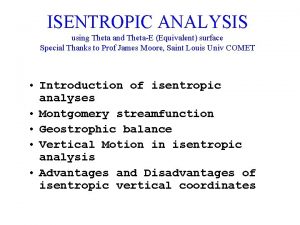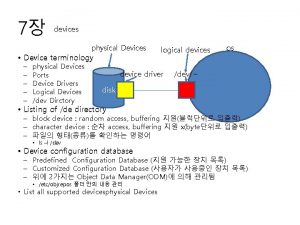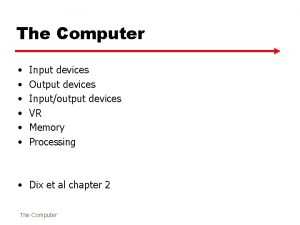7 12 ISENTROPIC EFFICIENCIES OF STEADYFLOW DEVICES Chapter

























- Slides: 25

7– 12 ISENTROPIC EFFICIENCIES OF STEADY-FLOW DEVICES Chapter 7 1

Isentropic Efficiency l l The more closely the actual process approximates the idealized isentropic process, the better the device performs. A parameter that expresses quantitatively how efficiently an actual device approximates an idealized one is the isentropic efficiency, which is a measure of the deviation of actual processes from the corresponding idealized ones. 2

Isentropic Efficiency of Turbines 3

4

5

6

Isentropic Efficiencies of Compressors and Pumps When the changes in kinetic and potential energies of the gas being compressed are negligible, the work input to an adiabatic compressor becomes equal to the change in enthalpy, When the changes in potential and kinetic energies of a liquid are negligible, the isentropic efficiency of a pump will be 7

Isothermal efficiency of a Compressor Sometimes compressors are cooled intentionally by utilizing fins or a water jacket placed around the casing to reduce the work input requirements where wt and wa are the required work inputs to the compressor for the reversible isothermal and actual cases, respectively. 8

9

10

11

Isentropic Efficiency of Nozzles are essentially adiabatic devices and are used to accelerate a fluid. The isentropic efficiency of a nozzle is • Nozzles involve no work • the fluid experiences little or no change in its potential energy as it flows through the device. • If the inlet velocity of the fluid is small relative to the exit velocity, Then the energy balance for this steady-flow device reduces to Then the isentropic efficiency of the nozzle 12

13

Note that 14

But << Then it can be ignored 15

16

7– 173 Air enters a two-stage compressor at 100 k. Pa and 27°C and is compressed to 900 k. Pa. The pressure ratio across each stage is the same, and the air is cooled to the initial temperature between the two stages. Assuming the compression process to be isentropic, determine the power input to the compressor for a mass flow rate of 0. 02 kg/s. What would your answer be if only one stage of compression were used? 17

Recall: for two stage compressors the pressure ratio for minimum work we found 18

Compare 4. 44 and 5. 26 KW 19

7– 210 Consider the turbocharger of an internal combustion engine. The exhaust gases enter the turbine at 450°C at a rate of 0. 02 kg/s and leave at 400°C. Air enters the compressor at 70°C and 95 k. Pa at a rate of 0. 018 kg/s and leaves at 135 k. Pa. The mechanical efficiency between the turbine and the compressor is 95 percent (5 percent of turbine work is lost during its transmission to the compressor). Using air properties for the exhaust gases, determine (a) the air temperature at the compressor exit and (b) the isentropic efficiency of the Compressor 20

21

22

7– 175 Steam at 6 MPa and 500°C enters a two-stage adiabatic turbine at a rate of 15 kg/s. Ten percent of the steam is extracted at the end of the first stage at a pressure of 1. 2 MPa for other use. The remainder of the steam is further expanded in the second stage and leaves the turbine at 20 k. Pa. Determine the power output of the turbine, assuming (a) the process is reversible and (b) the turbine has an isentropic efficiency of 88 percent. 23

We take the entire turbine, including the connection part between the two stages, as the system, which is a control volume since mass crosses the boundary. Noting that one fluid stream enters the turbine and two fluid streams leave, the energy balance for this steady-flow system can be expressed in the rate form as 24

Substituting all h’s to find the power output of the turbine 25
 Isentropic efficiency of pump
Isentropic efficiency of pump Captive reinsurance for stop loss
Captive reinsurance for stop loss Ecological efficiencies
Ecological efficiencies Isentropic efficiency of pump
Isentropic efficiency of pump Ds relation
Ds relation Kinetic assistant
Kinetic assistant Isentropic formula
Isentropic formula Isentropic process
Isentropic process Cbe 150
Cbe 150 Isentropic process
Isentropic process Adiabatic liquid water content
Adiabatic liquid water content Isentropic compressor
Isentropic compressor Isentropic velocity
Isentropic velocity Isentropic nozzle efficiency
Isentropic nozzle efficiency Isentropic mach number
Isentropic mach number Isentropic vikingsgrad
Isentropic vikingsgrad Poetic devices and literary devices difference
Poetic devices and literary devices difference Monitor is input or output device
Monitor is input or output device Of mice and men figurative language
Of mice and men figurative language Night chapter 4 literary devices
Night chapter 4 literary devices Lord of the flies chapter 11 summary
Lord of the flies chapter 11 summary Literary devices in chapter 6 of the great gatsby
Literary devices in chapter 6 of the great gatsby Solid state electronic devices 7th solution chapter 4
Solid state electronic devices 7th solution chapter 4 Lord of the flies chapter 8
Lord of the flies chapter 8 Site:slidetodoc.com
Site:slidetodoc.com The adventures of huckleberry finn literary devices
The adventures of huckleberry finn literary devices
